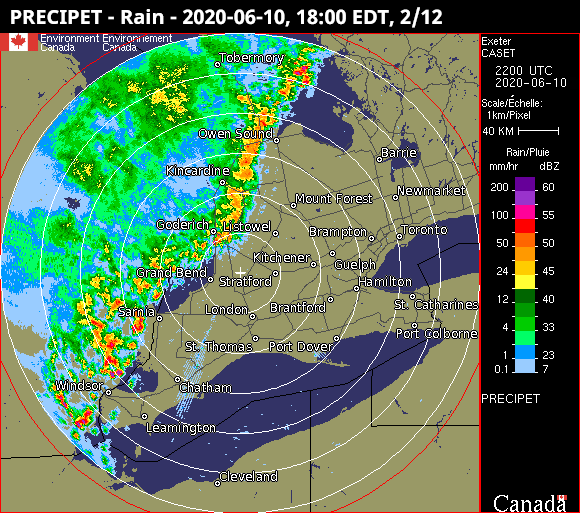A line of severe thunderstorms that swept through southwestern Ontario earlier this month spawned a total of four tornadoes in the London region, two more than previously thought, local researchers said Wednesday.

Researchers with Western University’s Northern Tornadoes Project (NTP) said they had confirmed that two EF0-rated tornadoes touched down in Huron County some two hours before two tornadoes were reported just outside of London.
The tornadoes touched down near Belgrave, Ont. around 5:45 p.m. and near Brussels, Ont., about 15 minutes later.

According to NTP, the tornado near Belgrave had a track 5.5 kilometres long, a width of up to 300 metres, and caused damage to trees and farm hutches in the area.
The tornado that touched down around 6 p.m. near Brussels, located about 13 kilometres to the southeast of Belgrave, tracked 3.1 kilometres, had a maximum width of 150 metres, and damaged several trees, the researchers said.
The team had previously considered the two tornadoes that touched down near London — an EF0 near Glencoe, Ont., around 7:50 p.m., and an EF1 near Belmont, Ont., around 8:30 p.m. — to be Ontario’s first two of the year.

Get daily National news
However, in addition to the Belgrave and Brussels twisters, researchers say they have also since confirmed that a preliminary EF2 tornado touched down two days earlier on June 8 near Brooks Lake, Ont.
A total of at least seven tornadoes have been linked to the June 10 storms, including the four in the London region, and three others that were confirmed in cottage country — Bracebridge, Mary Lake, and Baysville.
The two tornadoes that struck near Glencoe and Belmont left plenty of damage in their wake, despite both being on the lower end of the Enhanced Fujita scale, like the two tornadoes in Huron.
Near Glencoe, the team found a large maple tree that had toppled over, and damage to farm buildings, including a destroyed old barn.
In the Belmont area, damage to barns, sheds, and trees were also reported.

A farm building near Shain Road and Harrietsville Drive had its roof partially removed and relocated onto nearby railroad tracks, while a property about a kilometre away had the roofs of at least two farm buildings ripped off.
The purpose of the Northern Tornadoes Project, launched in 2016 and expanded in scope in the fall of 2019, is to report and catalog every tornado that touches down in Canada.
To meet the mighty goal, the project utilizes planes, drones, and high-resolution aerial and satellite imagery to find tornadoes in more remote areas that would otherwise go unreported.













Comments